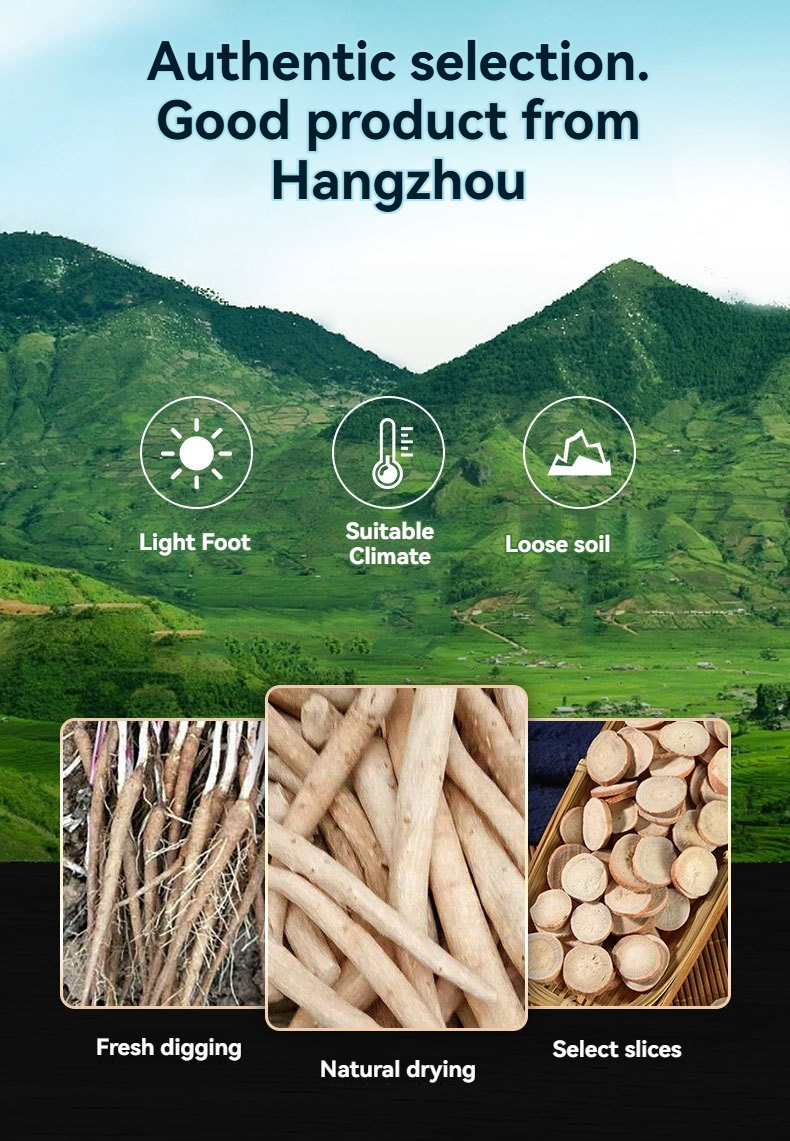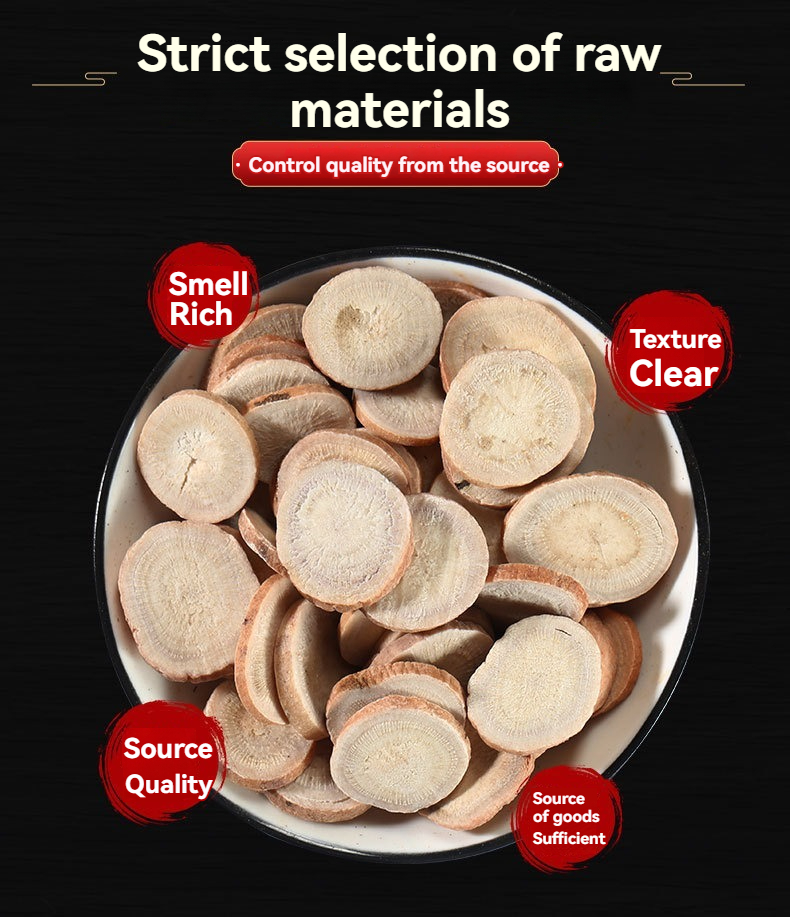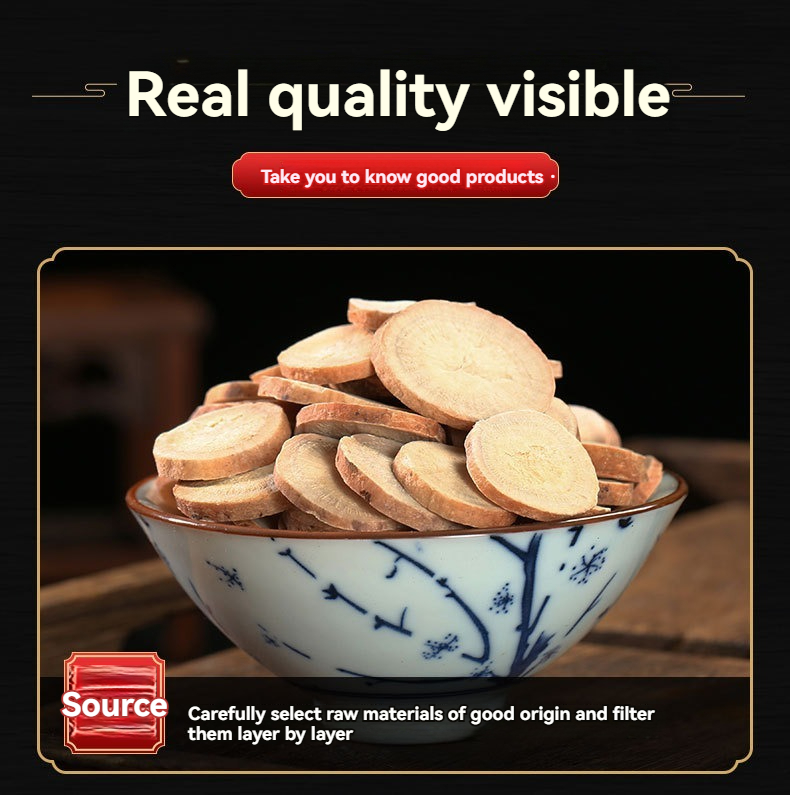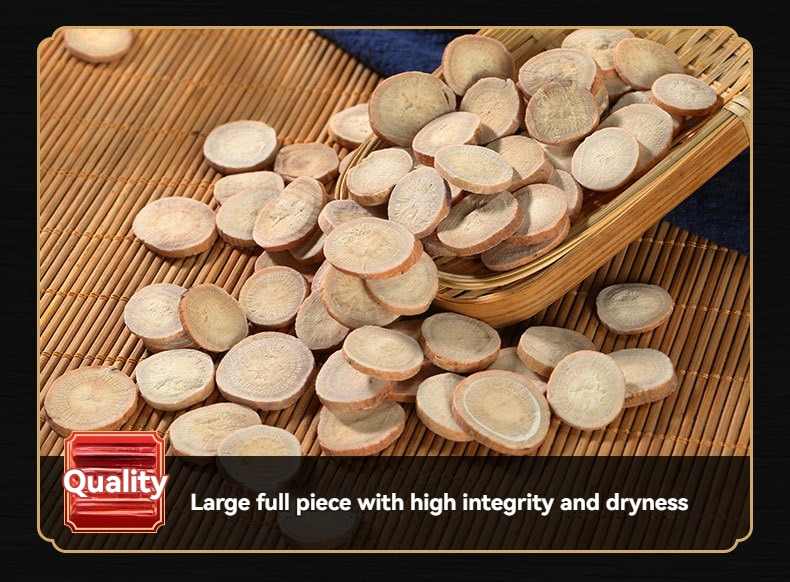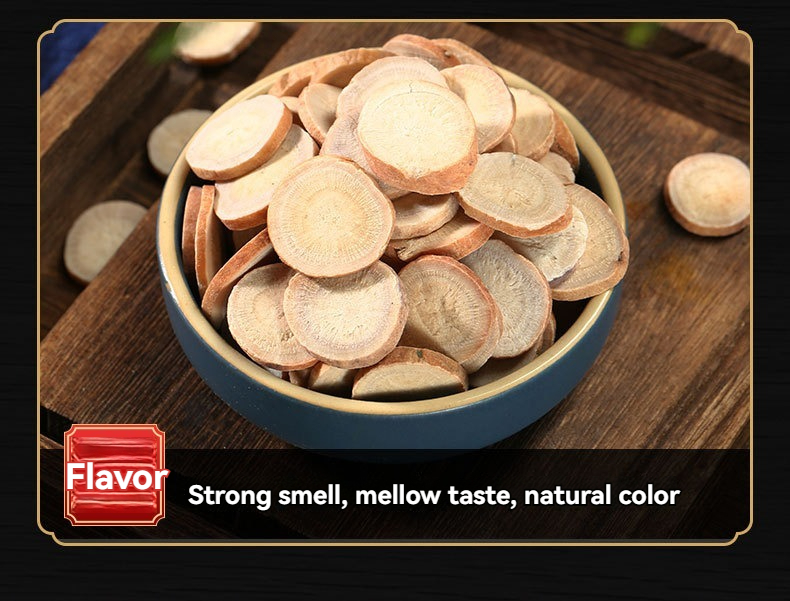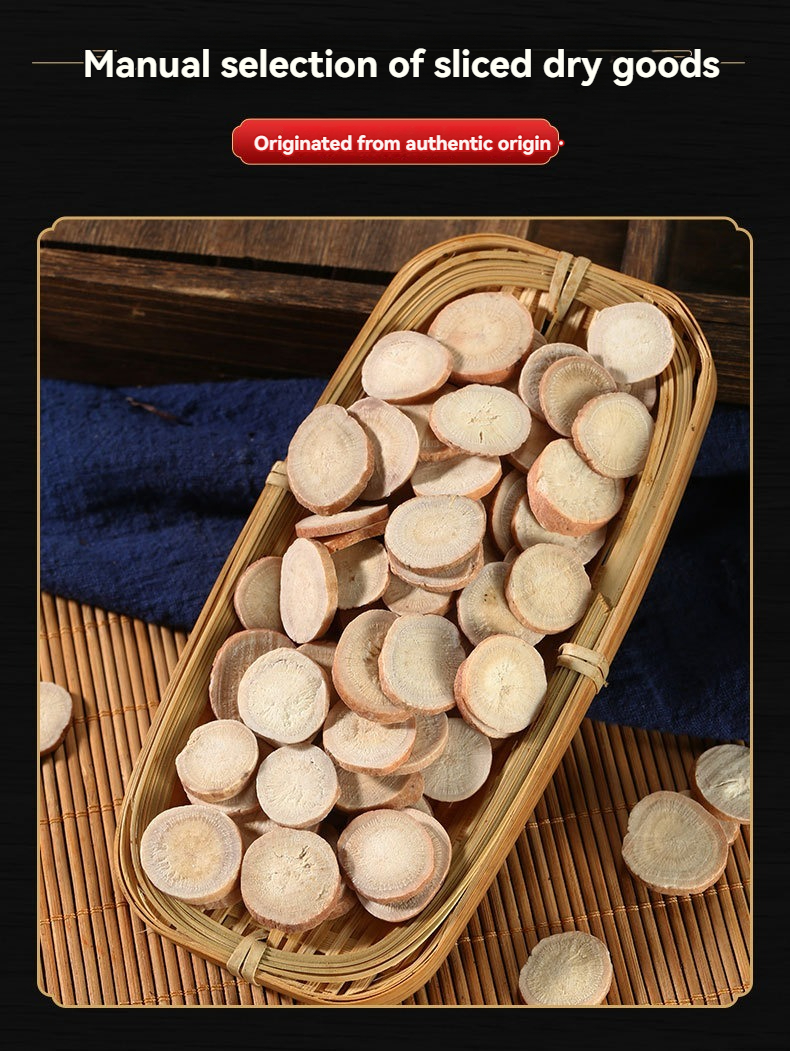White Peony Root (Bai Shao), a commonly used Traditional Chinese Medicine (TCM) herb, offers multiple therapeutic benefits, including nourishing blood and regulating menstruation, constricting yin and stopping sweating, softening the liver and alleviating pain, and calming excessive liver energy. Below is a detailed overview of its functions, precautions, usage methods, and identification tips.
I. Functions & Therapeutic Effects
- Nourishing Blood and Regulating Menstruation
Bai Shao replenishes blood and is used to treat symptoms caused by blood deficiency, such as pallor, dizziness, and palpitations. - Constricting Yin and Stopping Sweating
It helps敛阴 (constrict yin) and alleviate spontaneous sweating and night sweats. - Softening the Liver and Alleviating Pain
Bai Shao relieves pain by softening the liver, addressing abdominal and costal pain caused by disharmony between the liver and脾 (spleen) or qi stagnation in the liver. - Calming Excessive Liver Energy
It stabilizes hyperactive liver energy, alleviating headaches and dizziness associated with this condition.
II. Precautions & Contraindications
- Deficiency-Cold Syndrome
Bai Shao has a slightly cold nature. Patients with deficiency-cold symptoms (e.g., abdominal pain relieved by warmth, cold limbs) should use it with caution. - Allergic Constitutions
Individuals allergic to Bai Shao should avoid it to prevent adverse reactions. - Pregnant & Lactating Women
Due to its blood-activating properties, pregnant women and those in lactation should exercise caution to avoid harming the fetus or infant.
III. Usage Methods
- Decoction
Bai Shao is typically decocted, with a recommended dosage of 6–15 grams. - External Application
Grind Bai Shao into a fine powder, mix with warm water to form a paste, and apply topically to treat sores and abscesses with swelling and pain.
IV. Identification Tips
- Physical Appearance
- Shape: Cylindrical
- Surface: Light brown or off-white, with longitudinal wrinkles and raised transverse lenticels
- Texture: Firm and difficult to break
- Aroma & Taste
- Slight aromatic scent
- Flavor: Slightly苦 (bitter) and 酸 (sour)
- Cross-Sectional Characteristics
- Off-white or faintly pink in color
- Homogeneous texture
Conclusion
Bai Shao is a versatile TCM herb with diverse applications. While its benefits are significant, proper usage, adherence to contraindications, and sourcing from reputable suppliers are essential to ensure safety and efficacy.

